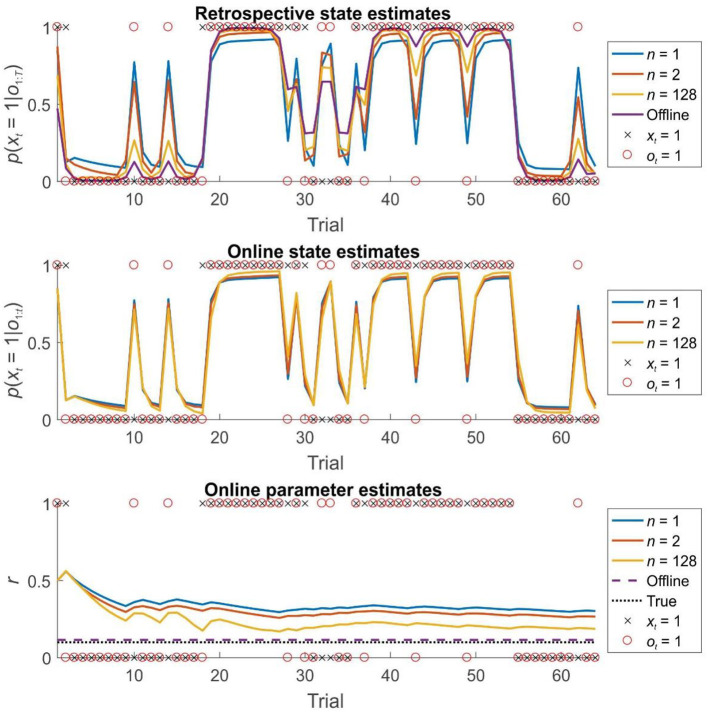Figure 4.
State and parameter estimation for agents performing dual estimation on the first 64 trials of a 256 trial session of the reversal task using different strategies. Top panel: the accuracy of retrospective belief estimates p(xi|o1:T) increases with greater window lengths, but still falls well-short of the performance of an offline agents, who has access to the entire time series simultaneously. Middle panel: the accuracy of online (filtered) beliefs about the current state p(xi|o1 : i) subtly but consistently increases with greater window length. Note that this effect is entirely due to the beneficial effects of greater window lengths on parameter learning. Bottom panel: the effect of window length on parameter learning. Estimates of r are derived from Πa at each timestep (the best estimate available to the agent at that time). With greater window lengths, parameter estimates converge more rapidly on the true value (Estimates from agents performing retrospective inference with windows of length 1, 2, and 128 time steps are shown in blue, orange, and gold, respectively. Estimates from an agent performing offline inference is shown in purple. True hidden states are indicated with black crosses, whilst observations are indicated with red circles. The true value of parameter r is indicated with a dotted black line in 5c).

